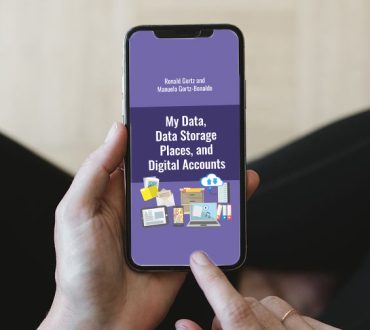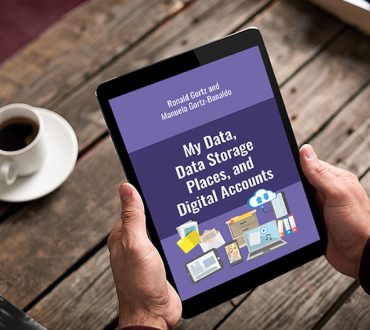Where can I buy it?
About the Book:
With the creation and development of computing or electronic-digital data processing in the last century, digital transformation has become part of many processes of organizations and people in their various particular conditions. However, with the advancement of this digital transformation to what is now called “cloud computing,” this transformation has not just grown linearly, but has leaped and advanced to much broader dimensions.
This new step began to include more actors and activities in society, even reshaping many boundaries of processes and data allocations or domains. Cloud computing has expanded the possibilities of distributed processing worldwide and the means of relationship between the actors of society. However, it also causes a new geographic matrix and places where the processes are executed and data are stored.
How can a person locate oneself on this new map of distributed digital processing? What attitudes are necessary for the actors of society to position themselves in this new scenario? What are the central matrices or parameters of risks and legal, civil, or digital rights to a person’s position in an increasingly digital society?
The challenge for each person to relate to an increasingly broad and diverse digital network is growing, leading to the need for individuals to be better informed and prepared. This book offers a comprehensive and singular reflection on this crucial topic, primarily from each individual’s perspective concerning one’s data and digital processes.
Table of Contents
Reasons to write and read this book
- General context
- Sets of objectives
- Premises or delimitations of the topics covered
- Topics’ general structure
SECTION 1 – HISTORY, DEFINITIONS, AND SITUATIONS ASSOCIATED WITH THE USE OF DATA
1. Data from different perspectives
- A brief historical perspective of data in society and their equivalence with information
- Data seen from the perspective of being assets
- Data seen from the perspective of monetary and financial systems
- Data seen from the perspective of credit systems
- Data seen from the perspective of memories and access to information about historical facts
- Data seen from the perspective of marketing and commercial approaches
- Data seen from the perspective of following up or treating people’s health
- Data seen from the perspective of agreements, contracts, legal rights, or the law and regulation area
- Data seen from the security perspective
- Data seen from a forensic perspective
2. Data storage – initial considerations
3. The use, handling, or processing of data – initial considerations
4. Non-computational data management and computational-digital data management
5. Digital processing and storage of data locally or on the worldwide network
6. Concepts or topics related to data in the context of the globally connected digital world
- Personal digital data
- Storage of personal data in the context of the worldwide network
- Right or ownership over data and regarding the access to data
- Growing emphasis on defining each person’s rights over personal data or that refer to an individual
- Chain of actors responsible or co-responsible concerning an individual’s personal data
- Privacy
- Permission for cross-use of data and personal devices by third parties
- Automated data synchronization
- Shared and automated use of data together with other users
- Digital accounts
- Individual digital accounts with multiple products or services provided by the same provider or on the same digital platform
- Multiple individual digital accounts with multiple products or services provided on multiple digital platforms
- Use of personal data disassociated from digital accounts, but under mini digital agreements
- Data in transit
7. Conclusion of the first section
SECTION 2 – CONSEQUENCES AND CHALLENGES
8. Initial considerations of the second section
9. Changes in the set of reference parameters
10. Reaffirmation and/or change of the set of responsible actors and responsibilities over data
11. Changes in criteria of data risk and security points
- General considerations about data risks and security
- Types of risks
- Risk to privacy
- Risk to asset items or values
- Risk associated with multiple digital services accounts
- Risk associated with the use of multiple interconnected equipment or devices
- Risk associated with historical data
- Risk associated with data in transit
- Risk related to data being used to identify individuals
- Risk of data becoming used to reach the personal decision-making system and the exposure to the inducing or influencing attempts
12. Needs for changes in education reference points
13. Changes in profession and business scenarios
14. Changes in criteria of laws or data regulations
15. Impacts on processes and systems in general
SECTION 3 – ALTERNATIVES ON HOW TO DEAL WITH PERSONAL DATA, DATA STORAGE PLACES, AND DIGITAL ACCOUNTS
16. Initial considerations of the third section
17. Specific topics – part 1
- Focus on the perspective of data subjects, users, or customers
- Needs X benefits X risks
- Recognition and review of purposes for uses of data
- Mapping of personal data, digital accounts, and digital services
- Management of multiple access points to digital services and data
- Mapping and management of joint, professional, or civil responsibilities over data of other data subjects
18. Specific topics – part 2
- Privacy, confidentiality, and secrecy – additional considerations
- Individual digital accounts with multiple products, applications, or services
- Individual digital accounts with anonymous identification features
- Passwords and recovery parameters of passwords and access rights to digital accounts
- Multiple validations or verifications of access to devices and digital accounts
- Cancellation of digital accounts
- Historical data X storage places X storage formats
- Data modified by sending and/or synchronization, and special attention to backups that are not generated equal to the originals
- Variation of access to digital accounts from different devices, and the partitioning of applications, data, and access areas on the same device
- Distinction between the grouped views of data and the areas used for data storage
- Permissions for cross, shared, or synchronized uses of data and devices
19. Imminent demand for multiple perspectives and more global categorizations on data and digital services
- Perspective of organizations or providers X perspective of data subjects or users of digital services
- Perspective that distinguishes providers of digital products or services from providers of other products and services that use digital services to support their activities
- Categorized perspective of types of digital services, types of data, or purposes of data uses
- Data perspective in the digital marketplaces’ operations of commerce of products
- Data perspective in the operations of digital marketplaces for transporting people and fast delivery of food, grocery, and other orders
- Data perspective in the areas of insurance in general and health care
20. Review and adjustment of practices of digital service providers and those who use people’s digital data to support their activities
21. Multiple perspectives of laws that aim to regulate data protection actions
22. Education using digital means and education about the interaction of people with the digital world
Conclusion
Acknowledgments
About the Authors
References
Other Books in the Series:








